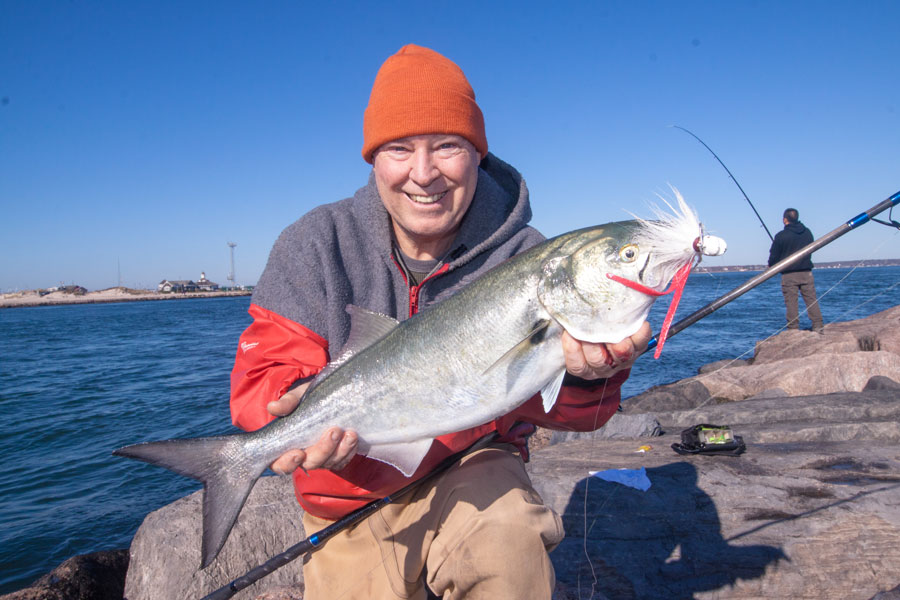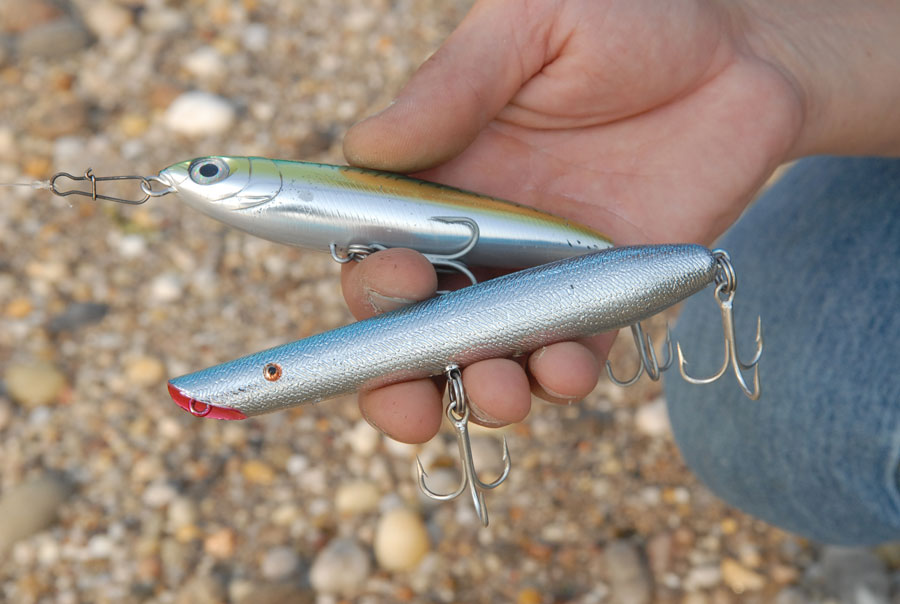
By Tom Schlichter
The strike from a large striper came just as I had expected. The dark, slimy eel at the end of my line had been wiggling its way up the slope of a deep hole as I drifted out the west side of a small Long Island Sound harbor mouth. As the eel eased up from 20 to 10 feet of water, a series of light taps indicated it was growing nervous at the end of my line. Suddenly, the taps turned into a strong, steady pull and I reared back to set the hook on a solid, 20-pound striper.
BIG FISH DRAW
What is it that draws both anglers and big fish to waters? The factors are many. First, there is usually plenty of current in these areas – often enough to disorientate baitfish. Consider, too, that most inlets and harbor mouths drain shallow flats, sucking out entire schools of spearing, peanut bunker, sand eels, bay anchovies, baby weakfish, snappers and the like to create a giant chum slick that extends from inshore waters right out into the open ocean or Sound. We’ve all seen how predator fish can respond to a little chum tossed over the side, now imaging tons of fodder being pulled helplessly out to sea by an ebbing tide – it’s no wonder that bass, blues, weakfish, fluke and other ravenous minnow eaters get in line once the current starts to push.
Speaking of current, outgoing water at an inlet or harbor mouth sets up a wall that deflects and confounds baitfish that are working along the shore, turning them out to deeper water as much as a half-mile off the beach where predator species lie in wait. The opposite can happen on rising water, too, with baitfish being sucked inside bays and harbors as they attempt to swim across the opening. These fish will be deposited at the tail end of the flow. Some might make it to the safety of the flats, but many will be gobbled up as they are pulled inside the bay or harbor.
STRUCTURE! STRUCTURE! STRUCTURE!
The constant flow of baitfish in an out of inlet and harbor entrances certainly help make these waters productive, but an even more important factor in terms of productivity is that inlets are structure heavens. Strong currents slice through sandy bottoms to created cuts, sluiceways, bars and troughs, deep channels and scourged-out holes. Rapid changes in depth also create rips and eddies providing anglers with varied opportunities over a relatively short area.
Rocks, jetties and break walls provide another kind of structure that lends itself well to fabulous catches. Jetties and rock walls line parts, if not all, of most inlet areas. Generally designed to discourage erosion, they provide breaks in the shoreline contour, mussel-lined nooks and crannies for baitfish to explore and hide, and deflection of current that can confuse prey species and light up the fiery competiveness of larger predators. Want to nail a huge striper when the tide is just about slack? Try live-lining a six-inch bergall up against the rocks at some point where they form a bulge in the shoreline. It’s almost a can’t-miss proposition during September and October.
Deep holes are another structure point, often overlooked by casual anglers. Most inlets and harbor mouths feature a deep hole or two near their entrance and exits and these can often hold the biggest game fish throughout a tide. Cow bass and weakfish will seek out these holes and sulk deep down, perhaps holding only a foot or so off the bottom. Here, they’ll occasionally move about to gobble up a porgy, sea bass, small fluke or bottom scavenger that’s probing the depths for an easy meal.
Bridges that cross major inlets often account for some great action with just about everything from bass and blues, to fluke, sea bass and scup. That’s because bridge abutments constrict the current flow, causing it to go even faster, and they are covered with mussels, weeds and other marine growth that attract and hold baitfish of all kinds. Work bridges in the day for just about any species, but be sure to also try them at night for bass, weaks and blues feeing in their shadow lines.

BE CAREFUL
Having discussed the strong currents, rips, and varied bottom configurations common to inlets, it should come as no surprise that these are not areas where you can let down your guard. Many skippers I know keep their engine running at all times, even while on the drift or anchored, when working inlet and harbor mouth areas. That way, they can react quickly to stray waves or boat wakes bounding off the rocks, changes of direction in the current, or a rapidly rising bottom.
Be aware, too, that you need to hold a secure position as you drop your line over the side. We’re talking heavy fishing sticks, big baits and, possibly, monster fish at the end of your line. Toss in a rogue wave or two, bouncy rip water and a deck slippery from the use of live eels or landed fish, and you’ve got an accident just waiting to happen.
As a rule, keep your drifts short and targeted to specific areas, keep your eyes on the water, and be aware of boaters around you at all times. If you can do all that – and keep your footing – you might just hook into your biggest fish of the year within sight of port.
By Tom Schlichter










